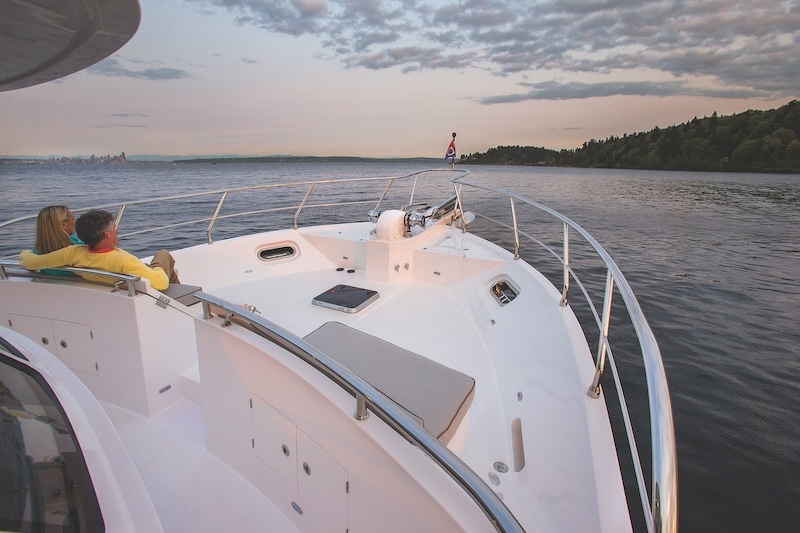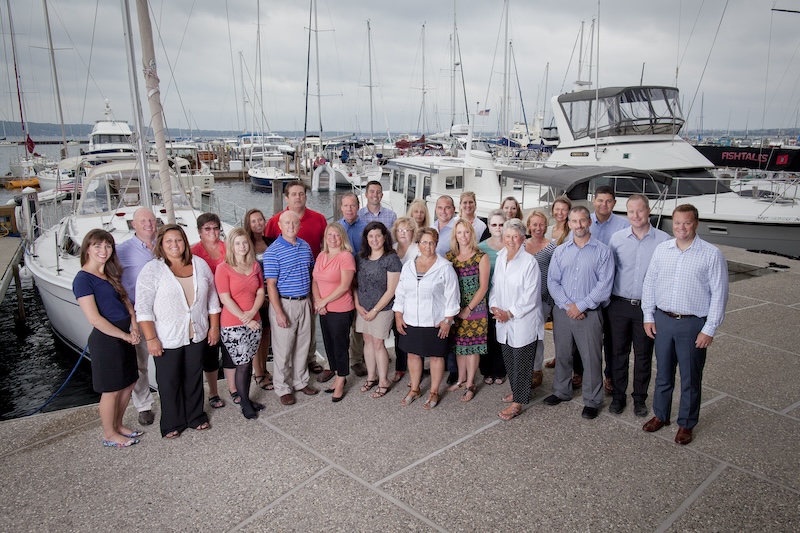
Great challenge means great opportunity — even in the insurance world.
Insurance is one of those things, isn’t it? We know we need to have it, but it can be daunting to review quote after quote and all the fine print while we’re dealing with too-full, hectic lives.
And, let’s be honest. Even if we know better, we often shop based on price alone (and primarily online) because that’s quick and easy.
That means many of us might be feeling a little cranky about our premiums. Some might have gone up. Others might have come down a bit, but perhaps they still feel too high.
Here’s the thing: Insurance companies don’t operate in a vacuum. Global events and economic forces buffet them just as they do other industries.
We recently connected with three insurance experts to take a deeper dive into what’s happening in 2024 and why. Along the way, we discovered that great challenge means great opportunity, for insurance providers and customers alike.
Our experts identified five key trends affecting the insurance industry today, and all five involve increases — of natural disasters, costs, newcomers to the boating lifestyle, lawsuits and electronics.
1: Natural disasters
Great Lakes boaters might not consider the impact of a hurricane in Florida, for example, or the losses incurred in a wildfire or mudslide in California. Yet they can have a lasting impact across the country.
“These catastrophic events cost hundreds of billions of dollars in damages,” says Matt Anderson, president of Global Marine Insurance Agency. “We’ve seen a tremendous amount of underwriting losses. Eight to 10 insurance carriers went out of business or left the state of Florida in recent years, so when a catastrophic storm hits, the reinsurance costs rise and may be spread out to the rest of the insurance market, to a certain extent.”
A distant disaster can also impact Great Lakes boaters in another way, according to Rick Stern, boat product manager for Progressive Insurance.
“When Hurricane Ian hit [in September 2022], there were so many losses, tows and repairs, we speculated that a lot of parts were sucked down to Florida,” he explains. “With parts shortages, boats are in the shop longer, which means costs increase.”
2: Costs
Of course, the boating world has been dealing with parts shortages for nearly four years due to pandemic-driven supply chain issues. While that is easing slightly, other pain points endure. These include high prices, persistent inflation and the shortage of qualified marine technicians.
“As we know, everything is more expensive today, including the boats themselves,” Anderson says. “Then you have the costs of parts, and if you have to wait for parts, you’ll pay more for storage as well.”
Then there is the cost of labor. To attract marine techs, employers are increasing their compensation packages. Anderson notes insurance carriers are paying claims adjusters more in compensation as well as the expenses related to in the field claims adjusting.
Boaters who hit an object and damage the outdrive, for example, are not just looking at the cost of repairing the damage. They also have to take into account the wait for parts, paying the boatyard for an extended stay, and the cost of the insurance adjuster (whose travel expenses also are much higher these days, as anyone who recently went on vacation can attest).
“The cost of repairing these boats today is going up dramatically,” says John Mauthe, marine business manager for Frankenmuth Insurance, noting that the cost of an insurance product also takes into account increased overall costs as well as the boat’s value.
Stern agrees, observing that the dollar value of the average claim has gone up significantly. He, too, cites the severity of losses, supply chain issues, increased compensation packages to address the labor shortage, and boats remaining in boatyards and service shops longer.
He says he remains optimistic, however. New boat shipments are coming down, and dealer inventory is going up; that’s good news for prices across the board.
“The average premium is starting to come down as boat values decrease a bit,” he explains. “We’re monitoring what the market is telling us. The wild card, as always, is the economy.”

Global Marine Insurance
3: New boaters
The COVID pandemic drove up more than costs. In 2020-21, new boaters purchased a decades-high number of new boats, sending prices — and insurance claims — sky high.
“People were using their boats more, which meant more claims,” Anderson says. “We saw a pretty big spike, and that takes time to wash through the system.”
“With new boaters, that typically settles down after a year,” Stern adds. “We look at the overall life expectancy for a policy when we price it, taking into account the lower propensity for claims in later years.”
4: Lawsuits
A significant loss occasionally turns into a lawsuit, especially if it involves two totaled boats and injuries. Here, too, the COVID pandemic wreaked havoc with the flow and cost of doing business. Court cases are backed up two to three years, and financial awards and fees have gone up.
“For example, you have a 100-foot yacht at the boatyard for a retrofit, and a fire breaks out,” Anderson says. “The carrier pays the eight-figure loss, and the owner is now out of it, because the claim is paid. But it wasn’t the owner’s fault, so the carrier subrogates against the yard’s commercial policy. Three years later, that case is still pending.”
5: Complex electronics
The digital revolution has touched virtually every aspect of life. Boats and yachts are no different; onboard electronics have become more complex, and they are integrated into virtually every aspect of onboard life.
Now, imagine a lightning strike.
“These losses are much more expensive than they used to be, especially aboard yachts, where much of the operating system is electronic,” Anderson says. “You’re looking at potentially significant damages.”
Stern compares the situation to a similar one in the automotive industry. A fender bender used to be a minor and inexpensive incident; that is no longer the case.
“In automotive, the front and back bumpers now have all these sensors,” he explains. “Boats have more electronics these days, too — computer-driven propulsion, throttle by wire.”
While a lot of older models with older technology are still out there, the cost to replace them in the event of a loss is still high. As Mauthe points out, you can’t replace 20-year-old electronics with the same thing.
“You will need new electronics, the same as a newer boat,” he says. “That’s why it’s important to get a policy that will allow you to replace what you’ve lost, not just provide cash value.”
Innovation and opportunity
Here’s the good news: These conditions drive innovation, which means better products, more offerings and more savings. For example: Grounding systems that ensure a lightning strike will bypass the vessel’s electrical systems altogether; and state-of- the-art storage facilities that can withstand extreme conditions.
Manufacturers and builders aren’t the only ones innovating. Insurance companies are also rising to meet today’s challenges with new ways to manage risk.
These range from specialized insurance products, such as a separate lightning deductible, to methods of data collection that will allow policy customization.
“Imagine you have two boats, same value,” Anderson says. “One person is using their boat as a dockominium. The other goes cruising. They have the same insurance rates despite using their boats differently.
“Data collection would allow us to develop customized policies, and allow the customer to save a substantial amount,” he continues. “That’s coming, down the road. Insurance should not be ‘one size fits all.’”
Progressive currently offers a program called Snapshot on the automotive side. Designed to reward car owners for good driving, the program sees how often and when drivers use their vehicles.
“That’s the holy grail for us in the boat world,” Stern says. “We currently look at the person’s age and zip code, years of boat ownership and experience, and the type of boat they have, in addition to other variables. At the end of the day, we still put you into an aggregate category, and if those costs are going up, yours are going up, too.
“Customization is the wave of the future,” he continues. “Imagine if we could layer your actual boat usage on top of those existing rating variables and give our customers a truly personal rate.”
In response to the strong gig economy, which appears here to stay, the future will also likely include policies for charter operations serving six passengers or less. We’re likely to see specialized coverage for boat lifts, as well.
Take a closer look
All three experts advise that this year is an excellent time to revisit the details of your current policy and re-evaluate your needs. Much has changed in the last few years.
If you need support, consider working with an independent agent who specializes in boats and yachts. Despite common misconceptions, it does not cost more to do so.
First, take a look at possible ways you can reduce your expenses. This could mean an actual-value policy on a boat that has depreciated significantly, or accepting a higher deductible based on how, when and where you use your boat.
“It’s worth it to re-evaluate your usage, since your circumstances might have changed,” Anderson says. “For example, you might not be trailering or cruising long distances anymore.”
Another option: Use a professional boatyard for all maintenance and service, ensuring that work is done to manufacturer specs. In the eyes of your insurance carrier, this reduces your exposure.
Finally, if you haven’t done it yet, sign up for courses in boating safety and boat handling. If you completed such courses in the past, be sure to let your carrier know.
“It’s a factor,” Mauthe says. “Good carriers will notice if you’ve never boated but have a 50-foot yacht. Getting educated can bring down your prices.”
Don’t forget: Whether you’re in the market for a new policy or are simply taking a closer look at your old one, go beyond the price tag.
“Most people think of insurance as a commodity, and if they see a policy for $100 less, they assume it’s same thing as the more expensive ones,” Mauthe says. “But ask yourself, why is healthy food more expensive? You get what you pay for.”
Rather than comparing policies based on price, compare them based on the coverage you need, and then ask yourself if the price
is reasonable for that coverage. In the end, be sure you’re purchasing your policy from a quality carrier who will be willing and able to help when something goes wrong.
For more information, visit FMINS.COM, GLOBALMARINEINSURANCE.COM and PROGRESSIVE.COM/BOAT.

Credit


